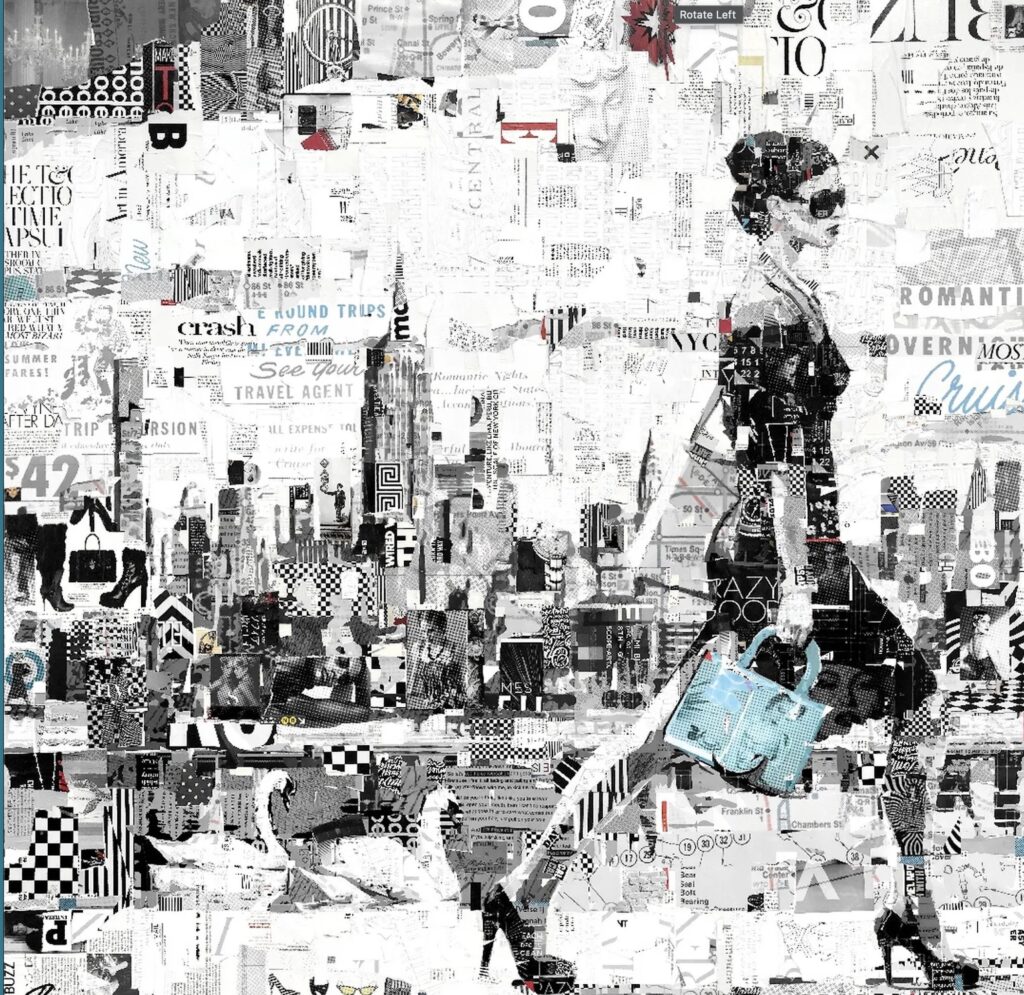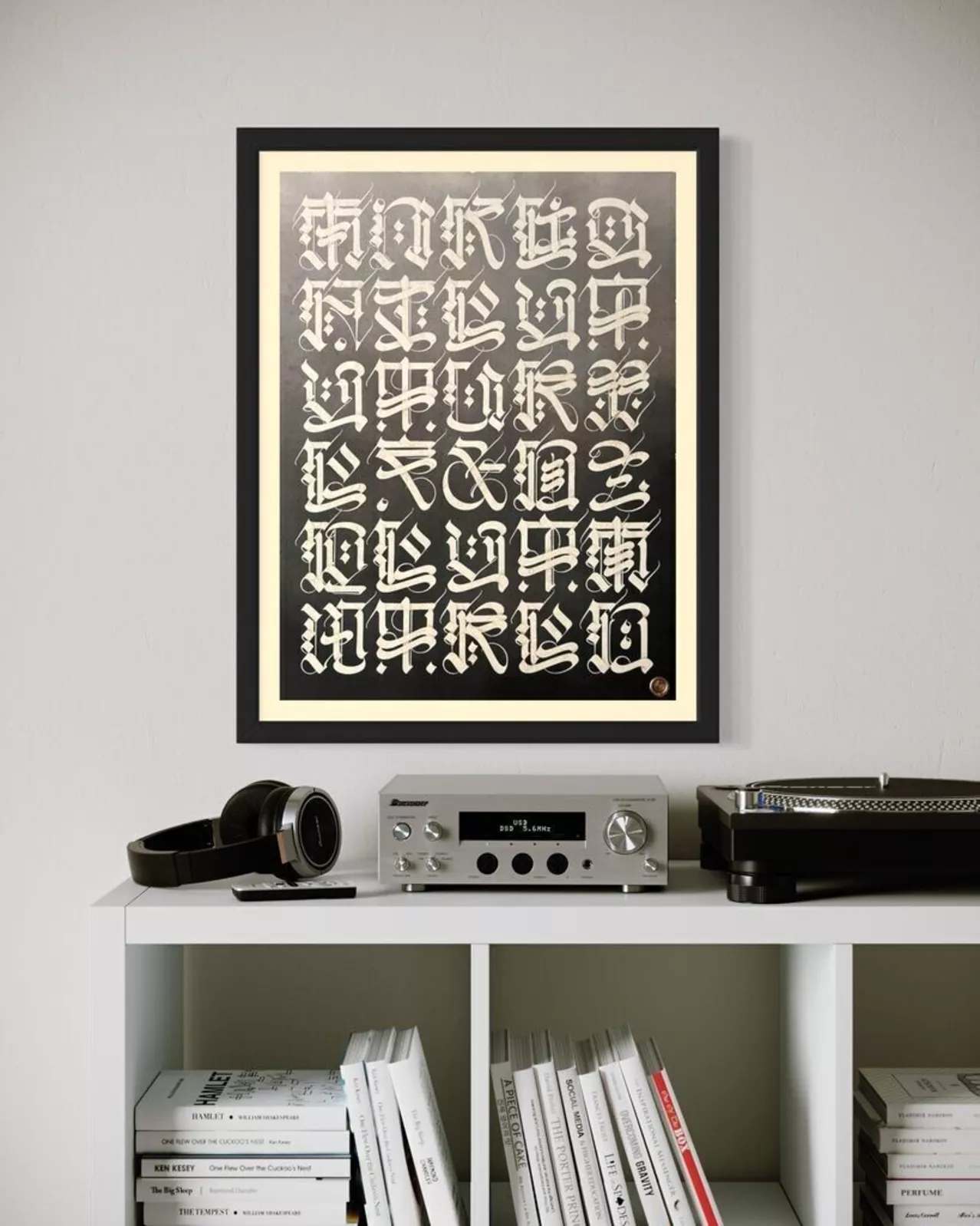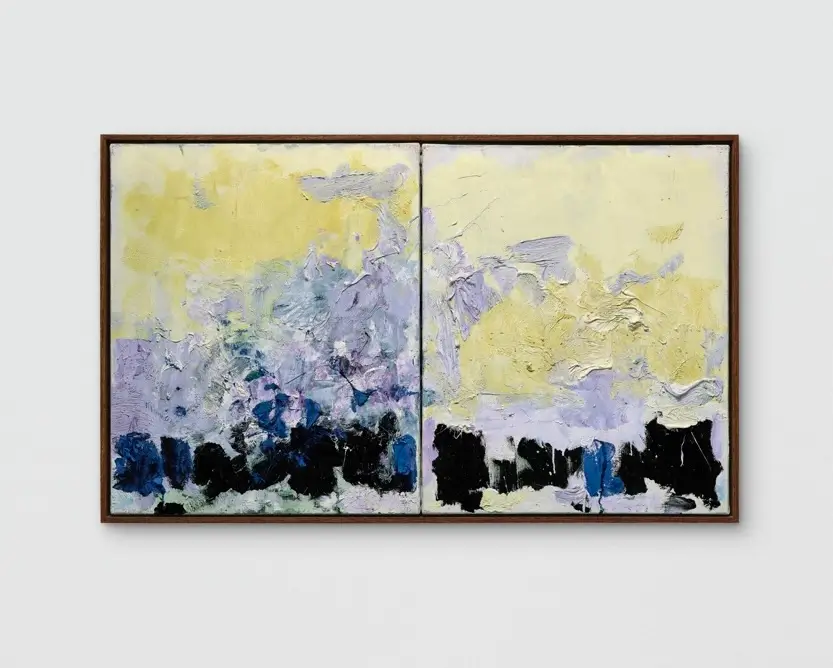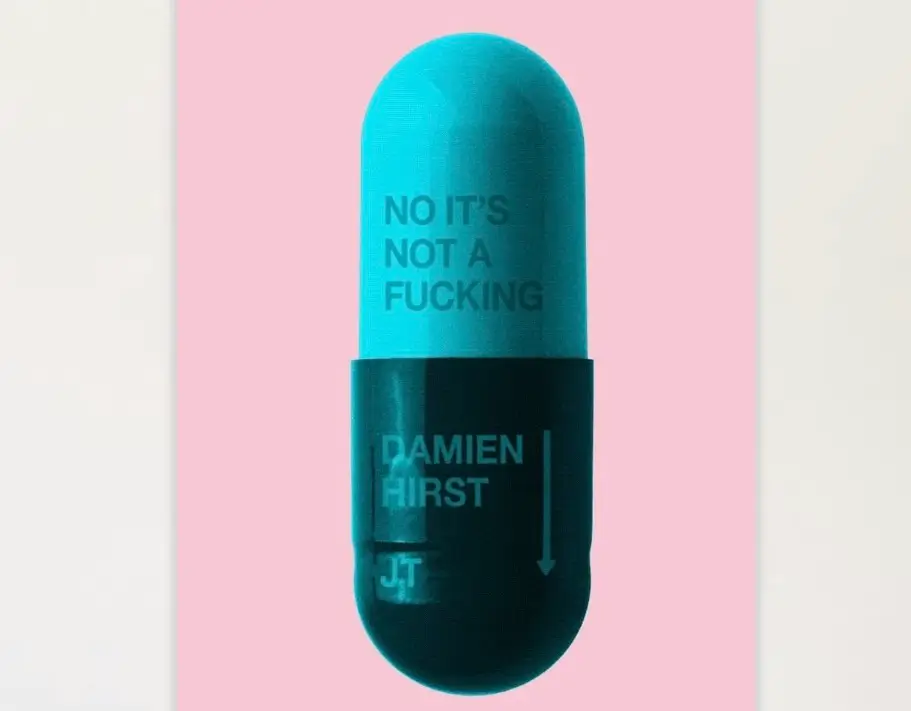Derek Gores’ NYC Strut is more than an image—it’s a rhythm, a pulse captured through paper, texture, and typography. Known for his innovative collage technique, Gores reconstructs familiar icons of modernity using recycled materials: magazines, maps, advertisements, and newsprint. The result is an artwork that bridges the gap between realism and abstraction, between chaos and design. In NYC Strut, the artist crystallizes the spirit of New York City—a metropolis defined by momentum, ambition, and style.
The Composition: Movement in Monochrome
The central figure, a woman confidently striding through a fragmented cityscape, channels the kinetic energy of Manhattan’s streets. Rendered primarily in black, white, and grayscale, the composition achieves depth not through color, but through density—each strip of text, each torn edge contributing to the illusion of speed and modern poise.
The turquoise handbag, however, breaks the visual code. It acts as both accent and anchor—a symbolic signature amid the grayscale sprawl. This electric blue hue recalls fashion’s use of color as rebellion: a single tone of individuality against the uniformity of urban life.
The overall geometry of the collage plays with verticals and diagonals. Newspaper fragments echo skyscraper silhouettes, while crosshatched grids and checkered fragments suggest the city’s architectural backbone. Gores’ choice to let words and headlines spill across the canvas mirrors the sensory overload of New York itself, where advertisements and typography compete for attention in every square inch.
The Figure: Feminine Agency and Urban Glamour
At the pithy of NYC Strut is the striding woman—glamorous yet grounded, anonymous yet emblematic. Her posture, elegant and determined, recalls fashion photography and cinematic iconography, perhaps nodding to Audrey Hepburn’s Holly Golightly, who famously walked Fifth Avenue with similar grace. Yet Gores updates this archetype: his figure isn’t an idle muse; she’s an active participant in the city’s rhythm, commanding space with every step.
Her high heels and sleek dress symbolize modern ambition and confidence. In contrast to the deconstructed backdrop, she remains whole, intact—a reminder that amidst the chaos of information, personal identity and agency persist. The composition reads like an editorial from Vogue torn apart and reassembled into something entirely new: both critique and celebration of urban femininity.
Technique and Texture: The Art of Reinvention
Gores’ process is both tactile and intellectual. Each collage begins with found materials—pages from fashion magazines, typefaces, and vintage advertisements—hand-cut and layered to form a cohesive image from fragments of mass culture. The approach is inherently sustainable, but more importantly, symbolic: the recycling of culture itself.
In NYC Strut, fragments of travel ads, ticket stubs, and magazine clippings construct the cityscape and the figure simultaneously. The viewer, on close inspection, can decipher snippets like “See You in NYC” and “Travel Agent,”suggesting movement, aspiration, and escape. This interplay between text and image transforms the collage into a semiotic puzzle—a portrait of a city assembled from its own media detritus.
The Urban Palimpsest: Reading the Layers
Every inch of NYC Strut feels alive with hidden messages. The overlapping text functions like conversations overheard in a crowded café—fleeting, overlapping, incomplete. This density gives the work its distinctly metropolitan character: one where narratives coexist, collide, and vanish in the same instant.
The cityscape beneath the figure dissolves into abstraction, yet recognizable silhouettes—possibly the Empire State Building and Chrysler Building—emerge subtly, anchoring the collage in New York iconography. The layering resembles the way urban experience accumulates over time, each advertisement, graffiti mark, or street sign forming a collective visual memory.
Gores’ collage invites slow looking. While the striding figure immediately captures attention, the true reward lies in examining the composition up close, where hundreds of micro-stories unfold—a metaphor for how cities function, built upon countless anonymous lives intersecting in motion.
View this post on Instagram
Context and Influence: From Dada to Digital
Derek Gores’ aesthetic lineage stretches back to Dada photomontage and Pop Art. Artists like Hannah Höch and Richard Hamilton first explored the potential of collage as cultural commentary, while Robert Rauschenberg’s combines blurred boundaries between painting, sculpture, and print media. Gores updates these traditions for the digital age, translating analog collage into contemporary visual language.
His method—recycling fashion and advertising imagery—also places him in dialogue with Barbara Kruger and Romare Bearden, both of whom examined identity and culture through recomposed imagery. Yet, unlike Kruger’s confrontational text or Bearden’s rhythmic figuration, Gores’ tone is seductive rather than subversive. His works revel in the beauty of chaos, finding coherence within cultural clutter.
Emotional Resonance: The City as Muse
What makes NYC Strut enduringly captivating is its emotional timbre. It doesn’t merely depict New York; it feels like New York—fast-paced, noisy, sophisticated, and full of contrasts. The figure’s stride embodies the city’s heartbeat, while the fragmented backdrop mirrors its relentless evolution.
There’s nostalgia in the analog textures—the yellowed newsprint and fading ink—yet also optimism in the composition’s upward thrust. The woman’s stride propels her forward, echoing the city’s ceaseless motion. Even amidst chaos, there’s direction. Even within fragmentation, there’s purpose.
The Limited Edition: Collectible Narrative
With an edition of 150 signed prints, NYC Strut exemplifies Gores’ balance between accessibility and exclusivity. Each print carries the artist’s hand in its signature, maintaining intimacy despite reproduction. Collectors value this work not only for its striking visual style but also for its thematic universality—it speaks to ambition, independence, and reinvention, qualities that define both artist and city alike.
Flow
Derek Gores’ NYC Strut stands as an emblem of modern collage—a visual symphony composed from the detritus of everyday culture. It celebrates motion, confidence, and identity through the lens of urban life. Every torn fragment becomes a brushstroke in a portrait of persistence.
In an age where information overload defines experience, Gores reclaims the analog act of making, reconstructing meaning from scraps. The woman striding through his city isn’t just walking; she’s navigating history, media, and selfhood—all at once. NYC Strut thus becomes more than a collage—it’s a manifesto for living artfully amid modern noise.
No comments yet.








